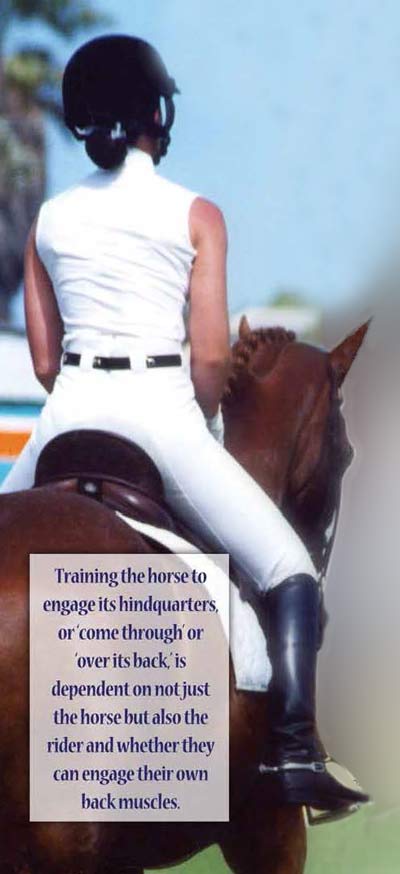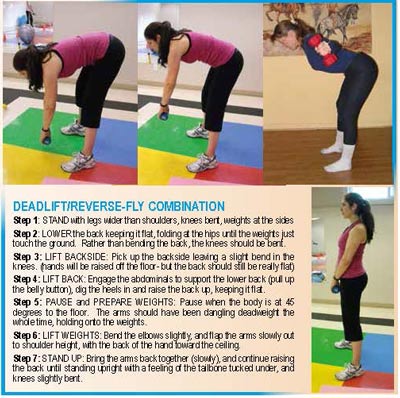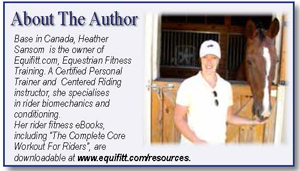|


It is common to talk about riding horses ‘through’ or ‘over’ the back, and the ability of the horse to move from the hind legs, therefore sending energy over the horse’s body through its back muscles is very important, regardless of the discipline in which the horse and rider are involved.
There are many ways a rider can block this flow of energy and momentum - from a poorly fitted saddle to tight hands - although the biggest factor influencing the horse’s use of its back is the pressure of the rider’s seat on the back. Riders must carry themselves, so that the horse can use the energy from the hind legs and carry itself effectively - whether that is over a fence, on the trail or in a dressage test. In other words, to get the horse to engage its back properly, riders need to be engaging their back correctly for the duration of the ride. For the horse’s back muscles to develop along their length, the rider needs to also do the same - riders who does not develop their back for self-carriage are not able to carry or position their own weight where they need it to be, whether that position is centered over the seat bones as in dressage, or held in a nice crest release over a fence.
Cross-training through un-mounted exercise is a good way for riders to strengthen muscles and learn to carry themselves correctly when in the saddle. The reasons serious riders use cross-training exercises have to do with sport-conditioning principles that are similar to those affecting how the horse is trained.
MUSCLE RANGE
The first is the fact that if a muscle is only trained in a shortened range (the range actually used in riding is very short), it will only become strong within a short range. If those muscles are trained in a longer range, they still have the strength needed in the riding position, but they also have more stamina. A comparable analogy would be training the horse to a higher level than the level the rider is actually competing at.
Allowing a muscle to only develop in shortened range - such as the range used riding- causes two potential problems. Firstly, it will have a tendency to create knots in the muscle and secondly, the weaker ends of the muscle will be prone to overstretching, or strain injury, as knots create tension and tightness in the ligaments. Besides having pain, the rider is at much higher risk for both acute injury - for example in the case of a sudden spook or ‘off’ landing - and repetitive strain injury.
Tight ligaments lock down joints and compromise the rider’s ability to absorb the horse’s motion. This lack of ability to properly absorb the horse’s motion in any part of the rider’s body creates overload in other parts, which creates other problems that may not have seemed to be related at first glance.
Simply stretching the muscles does not solve the problem because part of the muscle is knotted, and part of it is overstrained already. The muscle will rebound within a few minutes of riding - the knots will tighten, and the overstrained ends will be further pulled by the stretch.

Strengthening Riding Muscles
On the other hand, strengthening the area properly through a combination of stretch and strength moves that work the length of the muscle will help a rider avoid knots and tightness, and provide the stamina to maintain good posture throughout the ride, as well as respond to sudden or unexpected demand. Back pain from riding is a strong sign that the rider’s back strength workout is long overdue.
When it comes to a rider’s back, it is important to work back muscles along their entire length so that finding the postural ‘sweet spot’ and staying there throughout the ride is easy. Just a few minutes a day working on back strength will make a noticeable difference in a rider’s posture and the way their horse responds. If a rider often has a sore back, it would be a good idea to check with a physiotherapist or doctor before doing any exercises. Typically, it would also be better for someone with a weak back or back pain to start out very conservatively, and do just a few exercises per day as they gradually build up endurance.
If a rider is in fairly good shape, the fastest gains may be achieved by working the muscle area at least three times a week fairly intensely with a 48 hour break in between for the muscle fibres to repair and rebuild. The minimum number of training times per week to build strength in a muscle is twice. Three workouts per week accelerate progress considerably, if you have the time.
Knotted or overstretched muscles have a higher risk factor for injury when the unexpected spook or buck occurs.
Two effective back exercises for riders are the dead-lift and the reverse fly (standing) which can be combined into one movement for more efficient training. These exercises strengthen all of the lower, middle and upper back muscles used for riding posture. Hand weights that are readily available from most large department stores such as Myer, Target or Kmart, or any sports store, are required for these exercises, and they need to be heavy enough to make 20 repetitions in one set an achievable challenge. A good target would be to work your way towards doing three sets of 20 repetitions each in your workout. Do an exercise for a different muscle group in between to give the back muscles some recovery time. Do not stretch in between as muscle fibres that are pulled long cannot bear load as safely. This is why stretching before you work out should be light and in motion, and static or held stretches are only done after your training when you will not be placing demand on the muscles.

|